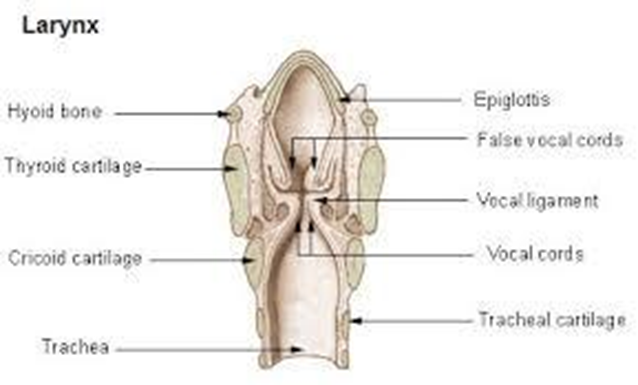Which of the following structures moves downward to close the trachea during the process of swallowing?
Epiglottis
Vestibular fold
Uvula
Cricoid cartilage
The Correct Answer is A
a. Epiglottis: The epiglottis is a small flap of cartilage located above the larynx (voice box). During swallowing, the epiglottis folds down to cover the opening of the trachea, preventing food or drink from entering the airway and causing choking.

b. Vestibular fold: Vestibular folds are also known as false vocal cords. They do not play a major role in preventing food or drink from entering the airway.
c. Uvula: The uvula is a small, fleshy projection hanging from the back of the soft palate. It does not directly cover the trachea during swallowing.
d. Cricoid cartilage: The cricoid cartilage is a ring-shaped cartilage located at the base of the larynx. It provides structural support and does not move significantly during swallowing.
Nursing Test Bank
Naxlex Comprehensive Predictor Exams
Related Questions
Correct Answer is D
Explanation
a. Decrease in sodium reabsorption: This would lead to further lowering of blood pressure, which is not a compensatory response.
b. Dilation of the afferent arteriole: This typically increases glomerular filtration rate but is not a primary response to decreased blood pressure.
c. Constriction of the efferent arteriole: This response helps to increase glomerular pressure but is secondary to other mechanisms.
d. Release of renin: Renin is released by the kidneys in response to low blood pressure, initiating the renin-angiotensin-aldosterone system (RAAS) to increase blood pressure by conserving sodium and water and constricting blood vessels.
Correct Answer is B
Explanation
a. Vas deferens: This is a tube that transports sperm from the epididymis to the ejaculatory ducts but does not form the bulk of the testis.
b. Seminiferous tubules: These tubules are where sperm production (spermatogenesis) occurs and constitute the majority of the testicular mass.
c. Seminal vesicles: These are glands that produce seminal fluid and are not part of the testis.
d. Corpus cavernosum: This is erectile tissue found in the penis, not in the testis.
Whether you are a student looking to ace your exams or a practicing nurse seeking to enhance your expertise , our nursing education contents will empower you with the confidence and competence to make a difference in the lives of patients and become a respected leader in the healthcare field.
Visit Naxlex, invest in your future and unlock endless possibilities with our unparalleled nursing education contents today
Report Wrong Answer on the Current Question
Do you disagree with the answer? If yes, what is your expected answer? Explain.
Kindly be descriptive with the issue you are facing.
